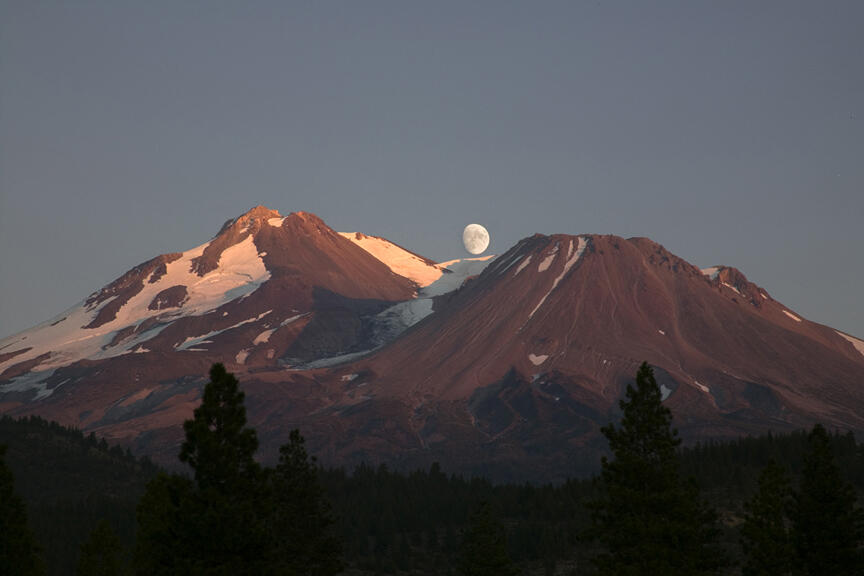Shastina is a large subsidiary cone that rises to 3,758 m (12,330 ft) and lies on the flank of Mount Shasta, 3 km (1.8 mi) west of the volcano's summit.
Shastina is a large subsidiary cone that rises to 3,758 m (12,330 ft) and lies on the flank of Mount Shasta, 3 km (1.8 mi) west of the volcano's summit. It was formed mainly between 9,700 and 9,400 years ago. Early eruptions of andesite lavas formed lava flows and, during the later growth of Shastina's main cone, several small domes grew within a central crater. During either the formation or destruction of one of these domes, Shastina erupted pyroclastic flows that roared down Diller Canyon and buried the present sites of Weed and Mount Shasta City.

Shastina is a large subsidiary cone that rises to 3,758 m (12,330 ft) and lies on the flank of Mount Shasta, 3 km (1.8 mi) west of the volcano's summit.
Shastina is a large subsidiary cone that rises to 3,758 m (12,330 ft) and lies on the flank of Mount Shasta, 3 km (1.8 mi) west of the volcano's summit. It was formed mainly between 9,700 and 9,400 years ago. Early eruptions of andesite lavas formed lava flows and, during the later growth of Shastina's main cone, several small domes grew within a central crater. During either the formation or destruction of one of these domes, Shastina erupted pyroclastic flows that roared down Diller Canyon and buried the present sites of Weed and Mount Shasta City.


